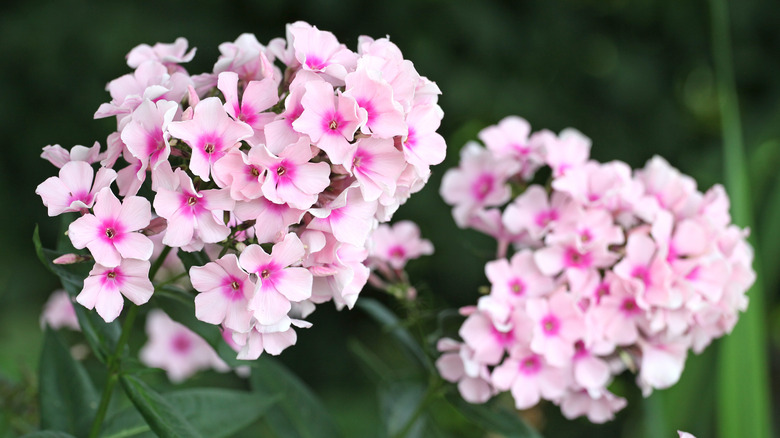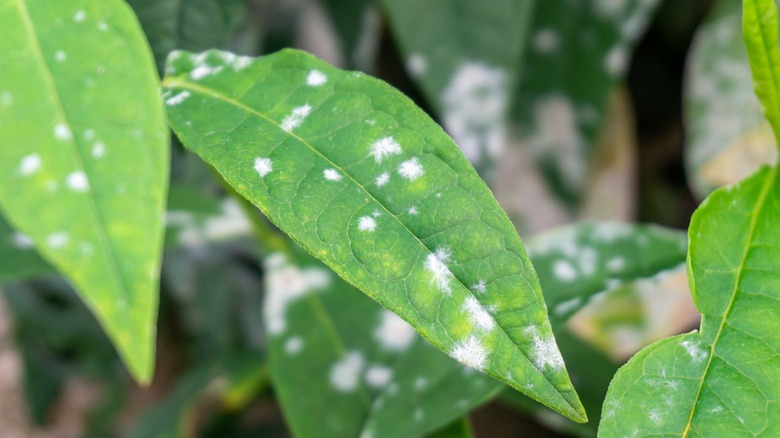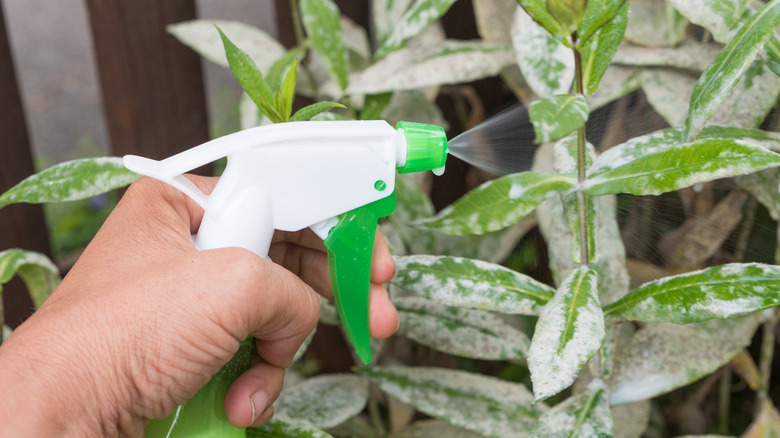Plant Rescue: What Powdery Mildew On Phlox Looks Like And How To Save It
Phlox are small flowers that grow in clusters. They come in almost any color imaginable, and some species bloom with two contrasting colors. These flowers are perfect for your garden if you enjoy bird-watching and seeing your local wildlife. Garden Design explains that phlox attracts hummingbirds, bees, and butterflies. Although, any deer or rabbits will quickly use your pretty flowers as a snack.
Depending on the species you choose for your location, this plant can grow from 6 inches to 4 feet tall. Phlox are perennials that live best in zones 3 through 9. They should get about an inch of water every week. The best soil for them is well-draining soil filled with nutritious compost. For this plant to produce beautiful blooms, you should plant it in full sun. If this isn't possible in your yard, some shade is OK as long as your phlox gets at least six hours of sun a day. What to do, though, if your phlox develops powdery spots?
Powdery white spots
Have you noticed powdery white spots appearing on the bottom foliage of your phlox plant? These spots could be a symptom of a common fungus disease for this species, powdery mildew. This fungus is known for taking over plants from the bottom leaves to the top; if left untreated, it will cause them to die. The spots you see are mildew spores growing on your plant until each leaf is covered in a layer of powder.
Iowa State University explains that the fungus kills your phlox by absorbing nutrients through the leaf tissue. It'll keep feeding off of your plant until the foliage dries out, turns yellow, and drops. This disease spreads through the air. As the wind blows by an infected plant, it carries mildew spores that will land on healthy vegetation. It thrives during the summer when the temperature and humidity are high. Planting your phlox in the shade can also increase its chances of growing powdery mildew because there's no sun to dry the moisture from its leaves.
How to save your phlox
Powdery mildew is easier to prevent than to treat. Try to plant your phlox in a sunny area and thin any overcrowded areas. Allowing air circulation will decrease the humidity and allow foliage to dry after rain. Once your plant is infected, you must take action as soon as possible. The Old Farmer's Almanac recommends removing any infected vegetation with sterilized pruners. You can throw these leaves and stems in the garbage or burn them. Putting them in your compost will infect any plants you add the compost to. If you leave the infected areas on the phlox, it'll continue to spread in the wind.
Fungicides will help treat the powdery mildew. Neem oil and sulfur work well to prevent and fight against this fungal disease. If you would rather use a homemade treatment, you can cover the infected areas of your plant with a baking soda mixture. Combine 1 teaspoon of baking soda with 1 quart of water and pour it into a spray bottle. With all of these options, you need to ensure that you apply them all over your plant. If the fungicide doesn't make contact with the mildew spores, it won't work.


